Do you follow a proper plan or strategy for IBPS RRB Mains 2019? Are you aiming IBPS RRB 2019 this time? If yes, then this is the section which can help you to do wonders if practiced well. A good attempt with a mix of accuracy can help you fetch good marks. The reasoning is a game of wits and mind. It is all about logics that a question may have. Speed and accuracy are what that matters the most in this section. The only way to achieve an ambitious goal is by practicing only. So, attempt the quiz of Reasoning ability that inculcates the important questions from the important topics. Do not miss out to practice the Reasoning Ability Quiz that is being provided on Bankersadda.
Directions (1-5): Study the following information carefully and answer the questions given below:
Eight persons A, B, C, D, E, F,G and H are sitting in a row not necessarily in the same order. Some of them are facing north while some of them are facing south. They buy different cars i.e. Honda, Kia, Suzuki, Tata, Hyundai, MG, BMW, Audi but not necessarily in the same order.
The one who buy Tata sits fifth to the right of F and both of them are facing same direction. The persons who buy Kia and Suzuki are immediate neighbors of each other and none of them sits at the corner. C buy Hyundai and faces south direction. Only one person sits to the left of F. D buy MG sits third to the left of the one who buy Suzuki. The immediate neighbour of C faces opposite directions (if one faces north then other faces south or vice versa). H sits at the corner and faces north direction. G who faces south and buy Audi sits second to the right of H. A does not buy Suzuki and Tata and faces north. B faces north direction and is not an immediate neighbour of E. F buy BMW. C sits second to the right of D. H is not an immediate neighbor of one who buy Tata.
Q1.Who sits third to the left of A?
(a) G
(b) B
(c) The one who buy Honda
(d) The one who buy Hyundai
(e) None of these
Q2.Who among the following sits at the corner?
(a) D
(b) C
(c) G
(d) The one who buy Kia
(e) E
Q3. G buy which of the following car?
(a)Hyundai
(b)Suzuki
(c)Kia
(d)Honda
(e) None of these
Q4. How many persons face south direction?
(a) one
(b) two
(c) three
(d) four
(e) five
Q5. Four of the following five are alike in certain way based from a group, find the one that does not belong to that group?
(a) E
(b) H
(c) C
(d) G
(e) D
Solution(1-5):

S1.Ans(c)
S2.Ans(a)
S3.Ans(e)
S4.Ans(d)
S5.Ans(b)
Directions (6-10): In each of the questions below are given some statements followed by some Conclusions. You have to take the given statements to be true even, if they seem to be at variance from commonly known facts. Read all the conclusions and then decide which of the given conclusions logically follows from the given statements disregarding commonly known facts.
Q6. Statements:
Only Rat are Rose
Some rat are potato
All potato are onion
Conclusions:
I: Some onion can be rose
II: All potato can never be Rat
(a) If only conclusion I follows.
(b) If only conclusion II follows.
(c) If either conclusion I or II follows.
(d) If neither conclusion I nor II follows.
(e) If both conclusions I and II follow.
S6.Ans(d)
Sol.
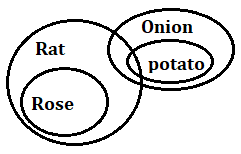
Q7. Statements:
Some pink are blue
Only blue is red
No blue is green
Conclusions:
I: Some pink are not green
II: All pink can be blue
(a) If only conclusion I follows.
(b) If only conclusion II follows.
(c) If either conclusion I or II follows.
(d) If neither conclusion I nor II follows.
(e) If both conclusions I and II follow.
S7.Ans(e)
Sol.

Q8. Statements:
All back are fire
Only fire are water
Only a few fire are number
Conclusions:
I. All number can be fire
II. All fire can be number
(a) If only conclusion I follows.
(b) If only conclusion II follows.
(c) If either conclusion I or II follows.
(d) If neither conclusion I nor II follows.
(e) If both conclusions I and II follow.
S8. Ans.(a)
Sol.
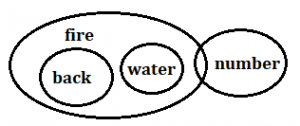
Q9. Statements:
Some Gold are silver
Some silver are copper
All copper are metal
Conclusions:
I. All gold is copper is possibility
II. Some metal are gold
(a) If only conclusion I follows.
(b) If only conclusion II follows.
(c) If either conclusion I or II follows.
(d) If neither conclusion I nor II follows.
(e) If both conclusions I and II follow.
S9. Ans.(a)
Sol.
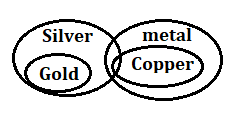
Q10. Statements:
Some pen are book
Some book are table
All table are work
Conclusions:
I. All Book are work
II. Some book are not work
(a) If only conclusion I follows.
(b) If only conclusion II follows.
(c) If either conclusion I or II follows.
(d) If neither conclusion I nor II follows.
(e) If both conclusions I and II follow.
S10. Ans.(c)
Sol.
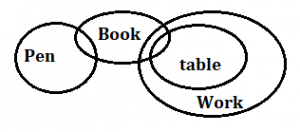
Directions (11-12): In these questions, relationship between different elements is shown in the statements. These statements are followed by two conclusions. Mark answer as
Q11. Statement: A≥M≥N=G>K, H>R=O≤N
Conclusion: I. A≥O II. H>K
(a) If only conclusion II follows.
(b) If only conclusion I follows.
(c) If both conclusion I and conclusion II follow
(d) If neither conclusion I nor conclusion II follows.
(e) If either conclusion I or conclusion II follows.
S11. Ans.(b)
Sol. I. A≥O(true) II. H>K(false)
Q12. Statement: H≥R≤K>E≤S, E=D≥G
Conclusion: I. G≥R II. K>G
(a) If neither conclusion I nor conclusion II follows.
(b) If only conclusion I follows.
(c) If both conclusion I and conclusion II follow
(d) If only conclusion II follows.
(e) If either conclusion I or conclusion II follows.
S12. Ans.(d)
Sol. I. G≥R(false) II. K>G(true)
Directions (13-15): In each question below is given a statement followed by two assumptions numbered I and II. An assumption is something supposed or taken for granted. You have to consider the statement and the following assumptions and decide which of the assumptions is/are implicit in the statement.
Q13.
Statement The largest domestic airlines corporation has announced new summer schedules in which more number of flights in trunk routes are introduced.
Assumptions
I. More number of passengers may travel by this airlines corporation during summer months in trunk routes.
II. Other airlines companies may also increase the number of flights in all the sectors.
(a) if only Assumption I is implicit
(b) if only Assumption II is implicit
(c) if either Assumption I or II is implicit
(d) if neither Assumption I nor II is implicit
(e) if both Assumption I and II are implicit
S13. Ans.(a)
Sol. The largest domestic airlines corporation has made the announcement that more number of flights in trunks routes are introduced because it assumes that more number of passengers may travel in trunk routes. So Assumption I is implicit. Assumption II is not implicit because no information is given about other airlines.
Q14.
Statement The chairman of the company decided to hold a grand function to celebrate silver jubilee during the next weekend and invited a large number of guests.
Assumptions
I. The company officials may be able to make all the necessary preparations for the silver jubilee celebration.
II. Majority of the guests invited by the chairman may attend the function.
(a) if only Assumption I is implicit
(b) if only Assumption II is implicit
(c) if either Assumption I nor II is implicit
(d) if neither Assumption I nor II is implicit
(e) if both Assumption I and II are implicit
S14. Ans.(e)
Sol. Both the assumptions are implicit because the decision to hold a function is taken as company officials may be able to make all the necessary preparations for the silver jubilee celebrations and it can also be assumed that majority of guest invited by the chairman may attend the function.
Q15.
Statements The largest computer manufacturing company slashed the prices of most of the desktop models by about 15% with immediate effect.
Assumptions
I. The company may incur heavy losses due to reduction in prices of the desktop.
II. The sales of desktop manufactured by the company increases substantially in the near future.
(a) if only Assumption I is implicit
(b) if only Assumption II is implicit
(c) if either Assumption I nor II is implicit
(d) if neither Assumption I nor II is implicit
(e) if both Assumption I and II are implicit
S15. Ans.(b)
Sol. By decreasing the price of a product, its sale can be increased. So, Assumption II is implicit. Assumption I is not correlated with the statement, so it is not implicit.
If you are preparing for IBPS Clerk Exam, then you can also check out a video for Reasoning below:
You may also like to Read:

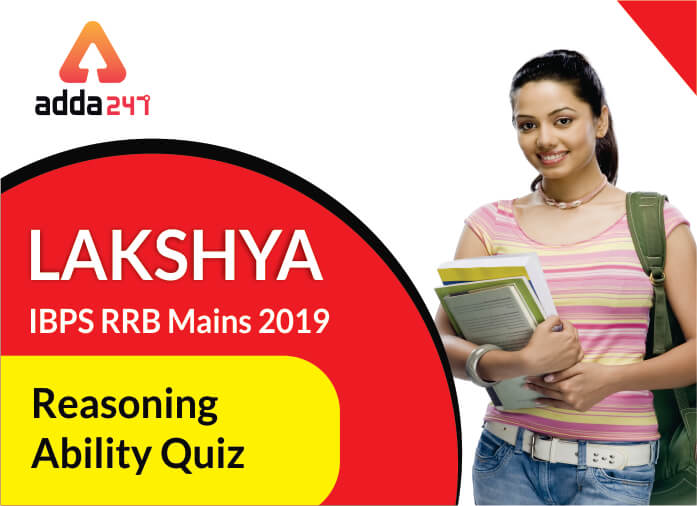
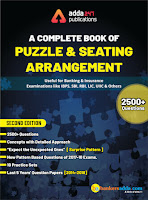


 GA Capsule for SBI Clerk Mains 2025, Dow...
GA Capsule for SBI Clerk Mains 2025, Dow...
 The Hindu Review October 2022: Download ...
The Hindu Review October 2022: Download ...
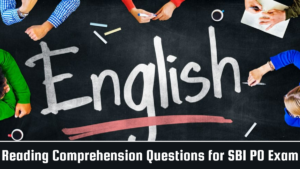 Reading Comprehension Questions for SBI ...
Reading Comprehension Questions for SBI ...





